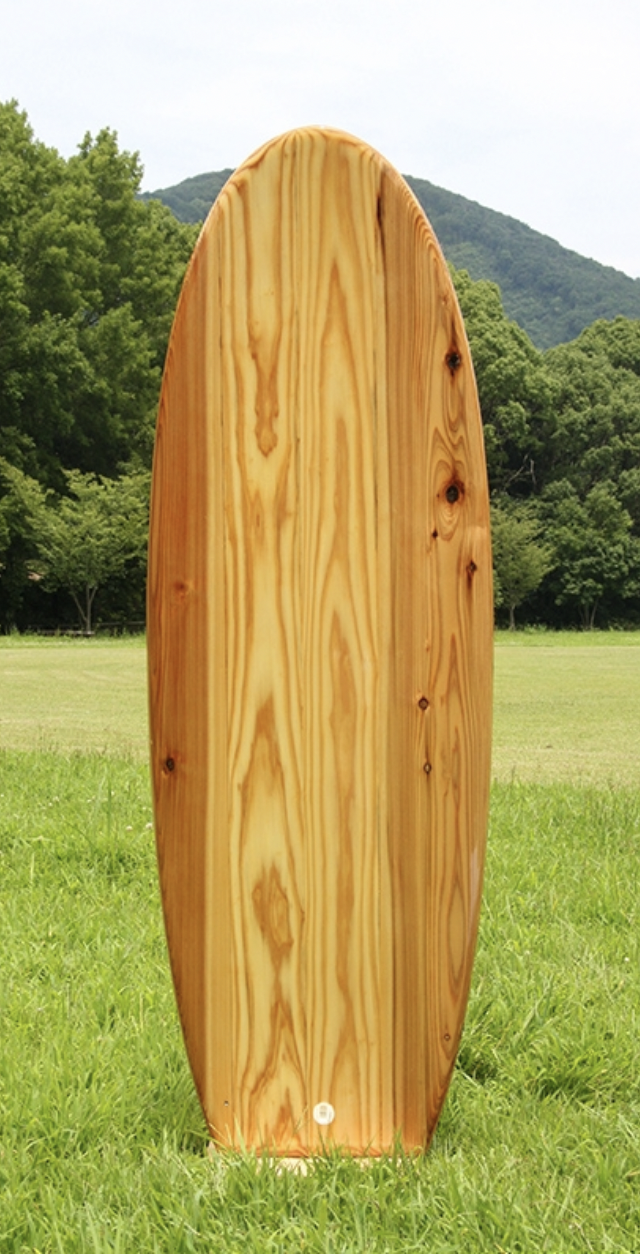Life Tips & Miscellaneous Travel and History Zen Philosophy and History Art and Sport Navigation of this blog
Surfboard
Surfboards are an essential piece of gear for surfing. Let me introduce them to you.
First, wood boards are said to be the origin of today’s surfboards. In ancient Hawaii, people used to enjoy surfing with wood boards such as Paipo, Alaia, and Olo.
The Paipo is a belly board that can be ridden on the belly and has existed in Japan since ancient times, the Alaia is a wood board from 7 to 12 feet in length that can be ridden on the belly as well as stand up, and the Olo is a wood board longer than that up to 17 feet in length. Olo was a longer wood board, up to 17 feet long, and was apparently a very expensive board for royalty only, forbidden to the general public.
Wood boards had no fins, no rocker, and were basically flat boards like the one in the picture below.

Even now, when I am in the ocean, I sometimes see people riding handmade wood boards. Without fins, the board doesn’t hold at all, and you feel like you are gliding on the waves. It’s a completely different experience from the surfboards of today, one that is both comfortable and difficult to ride.
Next, I would like to introduce fiberglass surfboards, which were the mainstream until a few years ago.

The base of the board is a polyurethane foam blank, which is reinforced with stringers made of wood or other materials, then carved (shaped) into the shape of the board. The board is then wrapped with glass fiber cloth (glassing) to reinforce the entire board and hardened with resin. Finally, after the resin has hardened, the board is sandpapered to create the detailed shape of the board (unevenness at the bottom, bends at the sides, etc.).
Since each board is made by hand by craftsmen in this way, the ride quality varies from one board to the next, and the price is expensive at around 200,000 yen per board.
The base polyurethane foam blanks were developed by the American company Coolus in 1960, and the recipe for manufacturing them was a secret, reproducing the perfect strength for surfing, so other companies could not follow suit, and they held a 90% share of the US market and a 60% share of the world market. In other words, a long time ago, Clarks blanks were used in almost all surfboards. However, when Clarks abruptly went out of business in 2005 due to environmental regulations on the material, the industry was temporarily thrown into turmoil, and surfboard innovation took off.
Since fiberglass boards are heavy and can be easily punctured, even during the heyday of fiberglass boards, the use of epoxy resin molds, known as molded boards, began to gain popularity around the year 2000.

Since the manufacturing process is no longer one-size-fits-all, but mass-produced, the price has dropped significantly and you can now buy them for less than half the price. Epoxy boards are lighter than fiberglass boards and have a stiffer ride. The strength of epoxy boards is much stronger than fiberglass boards, so many people use them as their main boards, and they have become a major brand along with Clarks shocks.
In recent years, many stores have started to sell soft boards, which are also known as sponge boards. Softboards, also known as sponge boards, are made of sponge material. This makes them even lighter and softer than epoxy boards.
Because of this softness and lightness, they have been used in surfing schools for beginners. In addition, the lightness of the board means that less material is used, and the price can be obtained at about half the price of epoxy. You can find many of them in the ocean since last year.

Even if you go to a large local surf store, soft boards take up a large area of the sales floor, a testament to their recent popularity.Soft boards are much lighter than epoxy or fiberglass boards, and they are also thicker for strength, so they have more buoyancy. In terms of paddling, epoxy and fiberglass boats are much more accelerated and easier to handle. Some people don’t wax their boats due to the rough surface of the softboard, but it can be slippery in the ocean, so it is better to use a soft wax specially made for softboards to make surfing more comfortable.


コメント